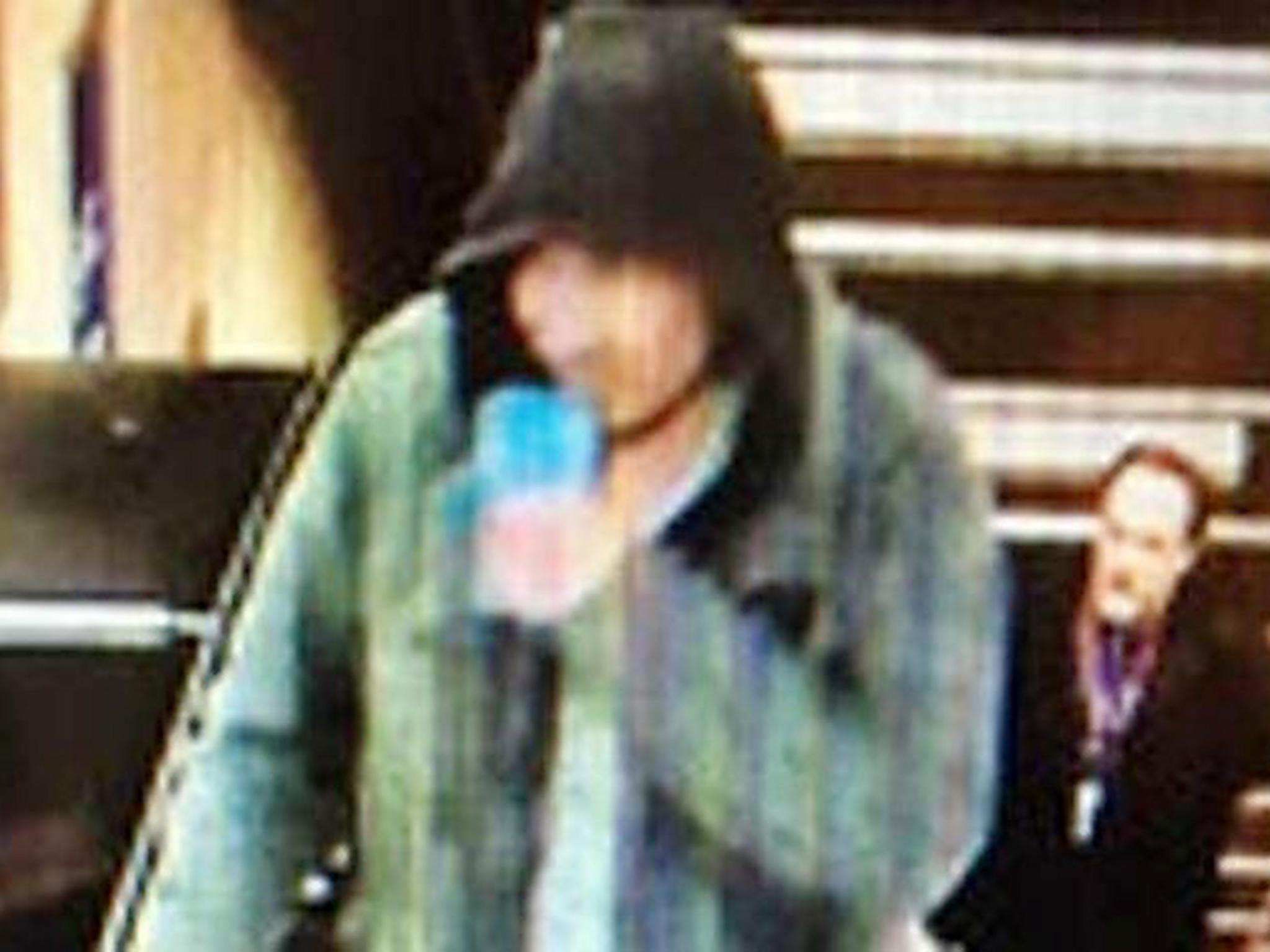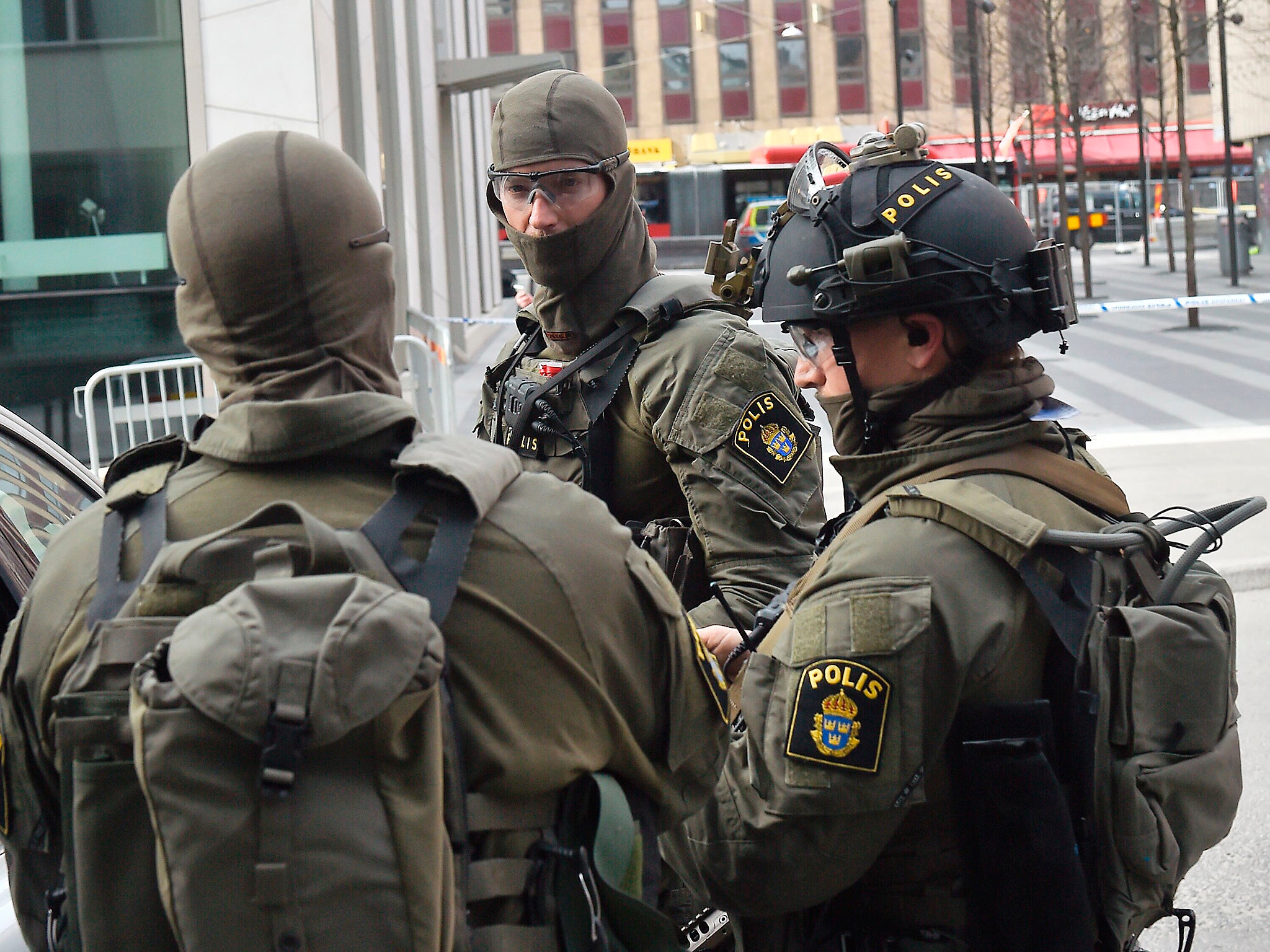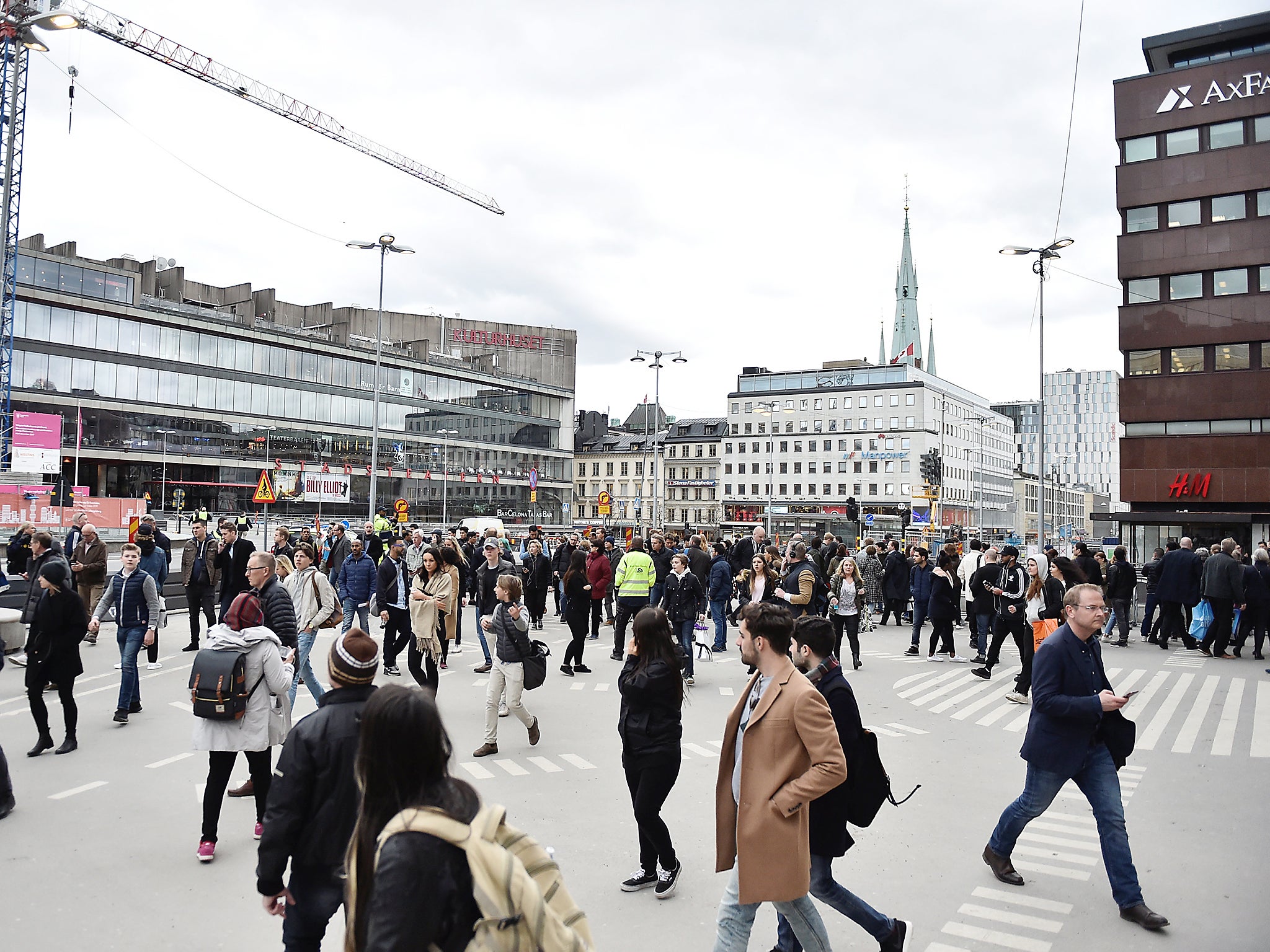Sweden terror attack: Everything we know so far as manhunt continues after lorry attack in Stockholm
Police warn public not to approach suspect who fled after killing at least three people
Your support helps us to tell the story
From reproductive rights to climate change to Big Tech, The Independent is on the ground when the story is developing. Whether it's investigating the financials of Elon Musk's pro-Trump PAC or producing our latest documentary, 'The A Word', which shines a light on the American women fighting for reproductive rights, we know how important it is to parse out the facts from the messaging.
At such a critical moment in US history, we need reporters on the ground. Your donation allows us to keep sending journalists to speak to both sides of the story.
The Independent is trusted by Americans across the entire political spectrum. And unlike many other quality news outlets, we choose not to lock Americans out of our reporting and analysis with paywalls. We believe quality journalism should be available to everyone, paid for by those who can afford it.
Your support makes all the difference.A manhunt is underway after a lorry was ploughed into pedestrians in Sweden, killing at least three people and injuring several more.
The vehicle was hijacked from a brewery before being used to commit the atrocity in Stockholm, being left partially embedded in the Ahlens department store.
A large area of the Swedish capital was evacuated after what the Prime Minister called a “terror attack”, with public transport stopped and parliament put on lockdown.
What happened?
Witnesses said the lorry sped down Drottninggatan (Queen Street), swerving into pedestrians in the busy shopping area before crashing into Ahlens shortly before 3pm local time (2pm BST).
“I turned around and saw a big truck coming towards me. It swerved from side to side. It didn't look out of control, it was trying to hit people,” said Glen Foran, an Australian tourist.
“It hit people, it was terrible. It hit a pram with a kid in it, demolished it.”
Police could not immediately confirm how many people were killed or injured but local reports said at least three victims were dead.
The driver fled the scene, sparking a huge manhunt for a suspect described as wearing a green jacket, grey hoodie and white shoes.
Police released an image of the man but urged the public not to approach him, and call the emergency services immediately with any sightings.
A large area of central Stockholm was cordoned off and evacuated by police, with Sweden's parliament put on lockdown and public transport suspended.
Who is responsible?
Police have not named the suspect but were understood to be questioning workers at the Swedish brewery Spendrups, where the vehicle had been hijacked earlier on Friday.
A masked gunman had forced his way into the vehicle, hitting the driver when he attempted to intervene before driving away, Expressen reported.
“Sweden has been attacked,” Prime Minister Stefan Lofven told reporters. “Everything indicates that this is a terrorist attack.”

Is it Isis?
There was no immediate claim of responsibility for the massacre, but suspicion quickly turned to the so-called Islamic State after its supporters used lorries in attacks in Nice and Berlin.
The incident came just weeks after a suspected Isis supporter killed five people in London before being shot dead by police.
Khalid Masood rammed his car into pedestrians on Westminster Bridge, then stabbed a police officer to death at the entrance to the Houses of Parliament.
Isis propaganda has continued attempting to incite terror attacks in Europe, the US, Australia and other countries supporting military operations against its fighters.
An issue of its Rumiyah magazine issued in November advised jihadis to launch vehicle attacks in an article citing the Nice lorry attack that killed 86 people as a “superb demonstration”.
“Having a secondary weapon, such as a gun or a knife, is also a great way to combine a vehicle attack with other forms,” it read.
Little over a month later, a failed Tunisian asylum seeker hijacked a lorry and ploughed it into a Christmas market in Berlin, killing 11 people.
Has Sweden been attacked before?
The most recent attack in Stockholm was in, 2010, when an Iraqi-born Swede killed himself while detonating two bombs days before Christmas, which failed to cause any other fatalities.
Taimour Abdulwahab al-Abdaly, who studied at the University of Bedfordshire and lived in Luton for almost a decade, supported al-Qaeda and named his son after Osama bin Laden.
He used a car bomb and pipe bombs in the explosions at the intersection of Bryggargatan and Drottninggatan, near Friday’s attack.
Minutes before the blast, an email threat had been sent to Swedish security services, referring to the country’s troops in Afghanistan and cartoons depicting the Prophet Mohamed, and his wife later uploaded audio messages to YouTube.
There have been several other plots in Sweden, which saw a suspected Isis supporter arrested after planning a pressure cooker bombing in February 2016.
A separate plot in 2011 was to target an art festival in Gothenburg to be attended by a Swedish artist who had drawn controversial cartoons of the Prophet Mohamed, with three men charged with intending to stab him to death.
Isis claimed responsibility for a firebombing in Malmö in October at a building used as an assembly hall by Shia Muslims.
The group has declared the sect apostates and targeted followers with terror attacks around the world, but no one was injured in the Swedish attack.
A 30-year-old Syrian man was charged with terror offences over the arson attack last month, after prosecutors found he had affiliated himself with Isis.

Is there a high terror threat in Sweden?
The national threat level has been set at number three - “elevated” – on a scale of one to five since 2010.
The Foreign and Commonwealth Office said there was a "general threat from terrorism" for British travellers and urged people to follow police advice and temporarily avoid central Stockholm.
Earlier this year, the head of the country’s counter-terror force said the biggest threat emanated from “lone wolves” inspired by Islamist groups including Isis and al-Qaeda.
“The biggest risk we're seeing is the individual player, who has been inspired and perhaps radicalized, almost on their own,” said NCT head Mats Sandberg.
“In our view that risk is greater than a major coordinated attack with several actors similar to Paris for example.”
Around 140 Swedish foreign fighters are believed to have returned from Syria and Iraq, out of at least 300 who travelled to the region to join Islamist groups.
The expected influx has sparked the creation of controversial rehabilitation programmes offering former militants housing, employment, education and financial support.
The country is believed to have one of the highest Isis fighters per capita in Europe, although it sits far behind France, the UK, Belgium and Germany in terms of numbers.
Methods of dealing with returning jihadis has been a subject of fierce as the terrorist group continues to lose territory across Syria and Iraq, with fears of an influx of militants fleeing a major offensive in Mosul.
Around one fifth of the group’s militants – 3,700 people – are residents or nationals of Western Europe, a King’s College London study estimated last year.

What effect has the attack had across Europe?
Public transport in Stockholm has been shut down, with disruption expected on international train services and at airports.
Traffic via the Oresund Bridge linking Sweden and Denmark was also partially limited as police searches continued.
The attack has increased the alert in neighbouring Norway, where authorities announced police at Oslo airport would carry guns until further notice.
Finland also increased patrols in Helinski as the EU offered Sweden support to catch the culprit.
Sweden is part of the Schengen free travel area, meaning he may have fled into neighbouring countries or beyond.
Similar circumstances were seen in the aftermath of the Berlin attack in December, when Anis Amri managed to travel from Germany to the Netherlands, Belgium and France, before being shot dead by police in Italy.
The Eiffel Tower was to put its lights out at midnight in tribute to the victims, while commemorations were being planned elsewhere.

Join our commenting forum
Join thought-provoking conversations, follow other Independent readers and see their replies
Comments